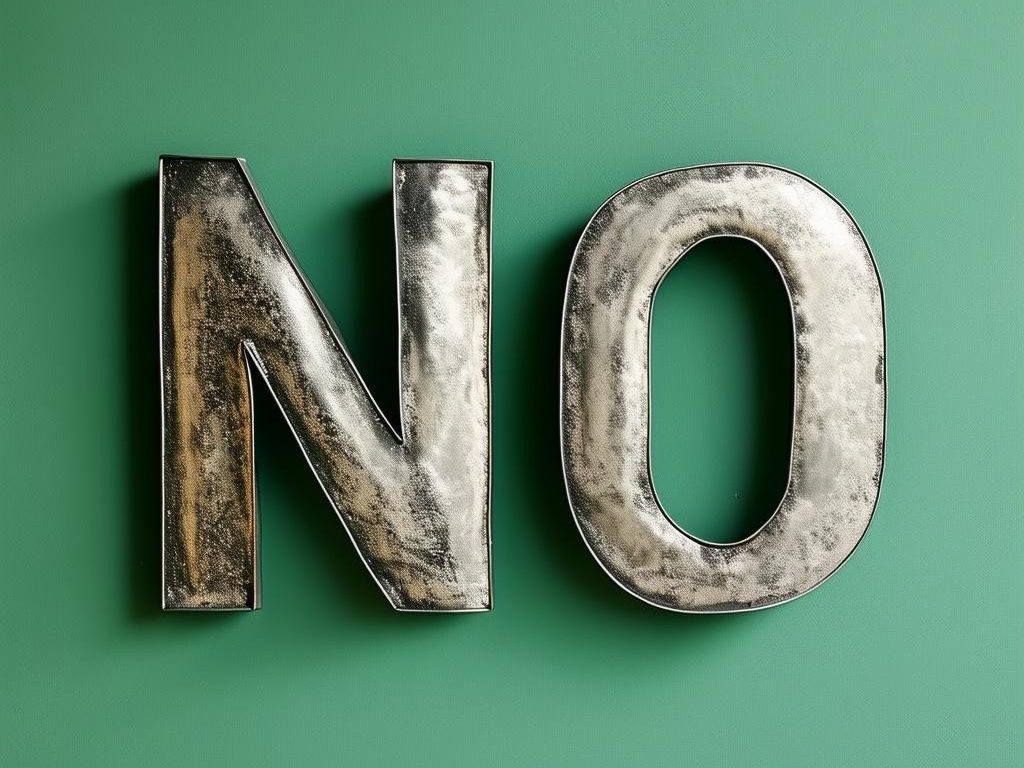
Bold Brands Say “No”
In the world of branding and marketing, “yes” often gets all the glory. A former agency colleague of mine — an enthusiastic account manager — even had giant letters for “YES” prominently featured on his office wall.
And it’s true: “yes” and “yes, and” are crucial to the process. In brainstorms, for instance, we explore a range of ideas — building on each other’s thoughts, venturing into unexplored territory. That’s one of the exhilarating parts of brand development.
But there’s another vital side to strategic and creative processes that most find far more painful: saying “NO.”
A ruthless, cut-to-the-bone, machete-wielding “NO.” When it’s time to sharpen your brand strategy and carve out a position you can truly own in the market, “no” becomes your most powerful ally.
It’s a difficult concept for many to embrace. The temptation to be everything to everyone is strong. After all, appealing to a broader audience seems like a safe bet, right? More customers, more sales, more success? No.
Here’s a counterintuitive truth that the most successful brands are built on: The narrower you draw the circle, the more “opinionated” and potent your brand can be — and the more people you truly connect with.
In fact, trying to please everyone often leads to a diluted brand that resonates with no one. The most memorable and influential brands are those that have made conscious decisions about who they are — and who they’re not.
Apple is a classic example. They’ve long said “no” to customization options that other tech companies offer. Or consider Patagonia. They’ve taken bold stances on environmental issues, even encouraging customers to buy less. It’s a risky move that alienates some, but it’s also created a tribe of loyal customers who share their values.
Say “no” to anything that doesn’t serve your brand’s core truth.
Honing Your Brand’s Essence
Refining your brand position takes much chiseling away at the stone — the amorphous block of blandness — removing everything but the essence of what your brand stands for. Here are some tips for more tightly focusing your own brand strategy – whether for your organization, service, division, or product:
- Define Your Core (Your “Why”): Start by identifying your brand’s fundamental values and unique strengths. What do you do better than anyone else? What principles guide your business decisions?
- Analyze Your Competition: Understand where your competitors are positioning themselves. Look for gaps in the market that align with your strengths. What unclaimed territory are you staking on the map?
- Choose (and Know) Your Audience: It’s tempting to speak generically to all audiences. Try developing a persona of who should NOT buy from you. Then dig into detailed personas of your ideal customers. How do the two contrast? What are your target audience’s needs, desires, and pain points? How does your brand uniquely address these?
- Make Hard Choices: Based on your core strengths, competitor weaknesses, and focused audience definition, decide what aspects of your business to emphasize — and which to let go. This might mean saying no to certain product lines, marketing tactics, or even potential customers.
- Craft Your Unique Value Proposition: Distill your brand’s essence into a clear, compelling statement that resonates with your target audience and differentiates you from competitors.
- Test and Refine: Share your positioning with a small group of ideal customers. Gather feedback and be prepared to make adjustments, but don’t lose sight of the “why.”
- Align Everything: Ensure all aspects of your business — from product development to customer service — align with your focused approach.
- Be Consistent: Once you’ve defined your position, stick to it. Consistency builds trust and recognition over time. Brands typically take at least 12-18 months to gain traction.
- Evolve Thoughtfully: As markets change, be open to evolution — but always in ways that stay true to your core brand essence.
The Courage to Say No
Remember, this process isn’t about limiting your brand, but focusing its power. In a world of endless choices and noise, only clear, tightly focused, and resonant messages cut through. Your brand’s strength lies not in being everything to everyone, but in being something essential to someone. It’s about finding your tribe, your niche, your unique space in the market.
Are you ready to discover what your brand can be when you dare to say “no”? Are you prepared to make the hard choices that lead to a truly distinctive brand? It’s not an easy journey, but when you have the courage to say “no” to the right things, your ideal customers will enthusiastically say “yes” to you.
Is your message getting lost in the noise? I can help.
I’m a senior copywriter and brand strategist seasoned by nearly 15 years of marketing agency experience. I build brand affinity with B2B and B2C audiences.
Let’s turn the complex into conversations that better connect with your key audiences.
